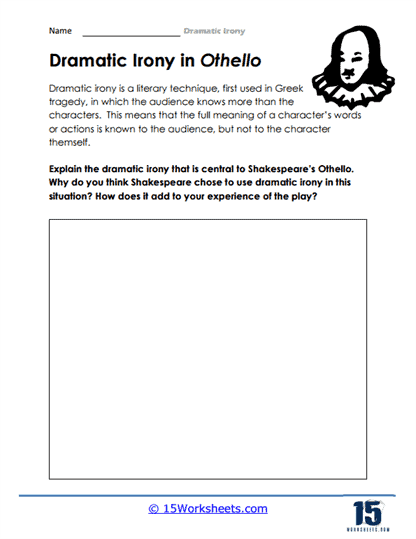Othello

Worksheet Description
This worksheet is about the use of dramatic irony in William Shakespeare’s play “Othello.” It begins by providing a definition of dramatic irony as a literary technique where the audience knows more than the characters. The main task for students is to explain the dramatic irony that is central to the play “Othello,” contemplating why Shakespeare might have chosen to use this device and how it enhances the audience’s experience of the play. A silhouette of Shakespeare is featured at the top, setting the thematic focus on the author and his work.
The worksheet teaches students to analyze and understand the role of dramatic irony in enhancing the storytelling of Shakespeare’s “Othello.” It encourages them to think deeply about the playwright’s intentions and the effect of dramatic irony on the audience’s engagement with the play. By reflecting on the purpose and impact of this literary device, students can gain insights into the complexities of dramatic construction. The exercise also aims to foster an appreciation for the ways in which Shakespeare’s use of dramatic irony contributes to the play’s enduring power and emotional depth.
Explain the dramatic irony that is central to Shakespeare’s Othello. Why do you think Shakespeare chose to use dramatic irony in this situation? How does it add to your experience of the play?
